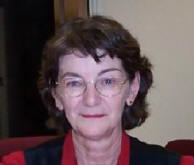Martie Young
Adams County Master Gardener
 It is such an exciting idea to start from scratch and plan and work on a new garden.
If you visit the Agriculture Center in Gettysburg this summer, you will be amazed at the changes in the Penn State Master Gardener Trial Garden. We now have half of our
garden beds set up as true raised beds; each bed is surrounded by 2 x 6 boards to keep the soil in, and wonderful top soil is filling those top 6 inches.
It is such an exciting idea to start from scratch and plan and work on a new garden.
If you visit the Agriculture Center in Gettysburg this summer, you will be amazed at the changes in the Penn State Master Gardener Trial Garden. We now have half of our
garden beds set up as true raised beds; each bed is surrounded by 2 x 6 boards to keep the soil in, and wonderful top soil is filling those top 6 inches.
Individual Master Gardeners have now taken ownership of one or more of the beds meaning, among other thinks, that we will have a more diverse
selection of plants. Some beds will be filled with annuals, others with perennials including ornamental grasses, and others with vegetables. The choices of what to plant are
up to the individuals who are planting the particular beds.
For those of you who have visited our Trial Garden in the past, these changes will be quite exciting. Last January we learned that we would no longer
be provided plants from Penn State because they were discontinuing their trial gardening program with Master Gardeners. Since we already had garden space and a lot of
enthusiastic gardeners, we did the logical thing and planned our own garden beds.
With the excellent organizational skills of Master Gardener, Dick Englund, pictured in the photo, we made a plan. We obtained some composite lumber,
put the beds together, and filled them with soil. All this took place with a lot of cooperation from other Master Gardeners, the Extension Office’s invaluable maintenance man
and a skid loader.
We filled our beds with a mixture of screened topsoil mixed with 30 percent mushroom soil. The mushroom soil is designed to add lightness to the
topsoil, lessen compaction, and make it easier to work. We obtained the soil with the sponsorship of Nolt’s Mulch Products, 3587 Old Harrisburg Rd., Gettysburg. Pay
particular attention to the quality of the soil when you come to look at the garden. Next, we did what every good gardener should do—we took a soil test. You can buy a soil
test kit at the Extension Office and send your soil sample to Penn State to be analyzed. When our test came back, it listed our pH at 6.6, which is just about perfect.
Phosphate, potash, magnesium and calcium were all above optimum, so there is no need at the present time to add any additional soil amendments.
At this point most of the beds are already planted. Cool weather annuals—annuals that are displayed in the garden stores along with pansies--were
planted in March. Cole crops have been planted—collard greens are a plant that we have not planted in previous years, but we have it this year. Other cole plants like
cabbage, broccoli, and Brussels sprouts can all be planted very early; in August another crop can be planted for fall harvesting. Perennials and herbs, with the important
exception of basil which is not frost resistant, were planted in April.
Another new feature at the garden this year is a hedgerow planted in the manner of English hedgerows. We have sited this hedgerow between Old
Harrisburg Rd. and our garden. It will be visible from the highway. The purpose of this type of hedgerow is for wind protection, food and shelter for birds and wildlife, and
for plant diversity. We have used mostly native plants that were planted bare root so they aren’t yet very big or showy. But that will change. Included are flowering dogwood,
hazelnut, and bayberry.
The last step in this gardening endeavor will be to evaluate our beds and plants to share the results with the public and other gardeners. The
evaluation will be similar to other years when two people checked the beds every two weeks and recorded such characteristics as uniformity of plants, bloom production, and
pests and disease. These results will be kept all summer and at the end of the growing season will be shared. You’ll probably see another gardening article on our plants in
the fall.
I hope all this new information will spur your curiosity to see our new beds. We will be having Garden Walks and Talks on Wednesday evenings during
the summer. Many of the Master Gardeners who have planted a bed at the garden will be on hand to give you more information about their specialties. Watch for our brochure
with details about the plants and a schedule of Walks and Talks. As always, the garden is open during daylight hours if you wish to see it on your own.
Read other articles on gardening techniques